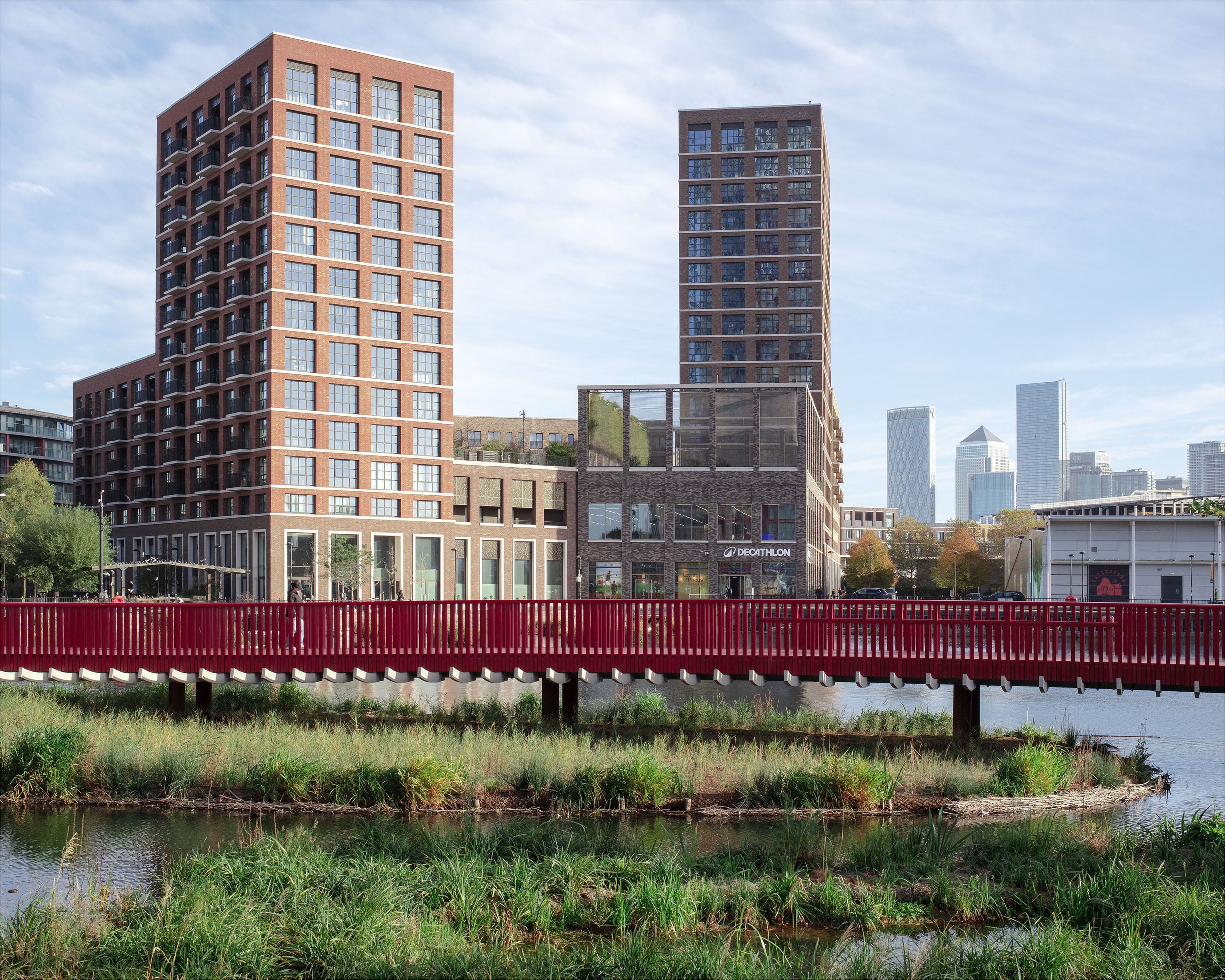
Canada Water Boardwalk
Location: Canada Water
Architect: Asif Khan
Developer: British Land
2024 - Text from BD Online
Asif Khan has completed a 170m boardwalk weaving through a mosaic of wetland habitats at British Land’s Canada Water development in south London.
The bright red-coloured timber walkway aims to connect residents in the developing mixed-use district around Surrey Dock.
Canada Water is one of the largest regeneration schemes in the capital with the first phase of homes, retail and office space set to complete in the coming months.
British Land and its joint venture partner Australian Super have unveiled the boardwalk as a new centrepiece of the development.
It passes through a patchwork of wildlife habitats created by landscape architect Townshend including reed beds, nesting areas for waterfowl and seven wetland islands along 1km of shallow shoreline.
The scheme has been warmly praised by the London Wildlife Trust, which will play an active role in the management of the wetland, with the trust’s chief executive David Mooney saying: “If every developer worked for nature’s recovery as much as this, the environment would be in a much better state.”
Artist’s statement by Asif Khan: ‘Our Fathers Walked on Water’:
“At Canada Water, I’ve been working with form, colour, and rhythm as abstractions of
motion and memories from the history of this dock, its timber cargoes, and the forests and rivers of Canada from where the timber originated.
“To walk on it is to connect across time to the movements and histories of people who worked with timber on this dock, and the places that timber came from. By walking across the bridge, we replay those moments in time.
“Inspired by Canada Dock, which was established here in 1876, the project reflects the journeys of timber “rafters” and “deal porters” who spent every day walking and working on the surface of water.
“The timber rafters built immense rafts of sawn red and white pine, or “deal,” to navigate the timber down Canada’s treacherous and expansive rivers, living aboard as they floated hundreds of miles toward the coast. Steam ships would months later be unloaded here in London by highly skilled “deal porters” who balanced the long planks on their shoulders, rhythmically running across narrow timber gangways that spanned from ship to shore over the water. Their precise movements and balance earn them the name “Blondins” after Charles Blondin who famously crossed the Niagara Falls in Canada by tightrope. The flow of water currents from river, the ocean waves and the bowing form of planks in the hands of a deal porter describe a series of lines which give the bridge its curves and the undulating rhythm of timber elements traced over time along its length.
“The bridge is a chronograph - a drawing that records time - capturing the motion of these individuals. It’s easily forgotten that forests on the other side of the ocean helped build London. Many layers of that story are embedded here. I want to invite reflection, wonder, and contemplation of the past as Londoners walk in the footsteps of their forebears across time and upon water.”








